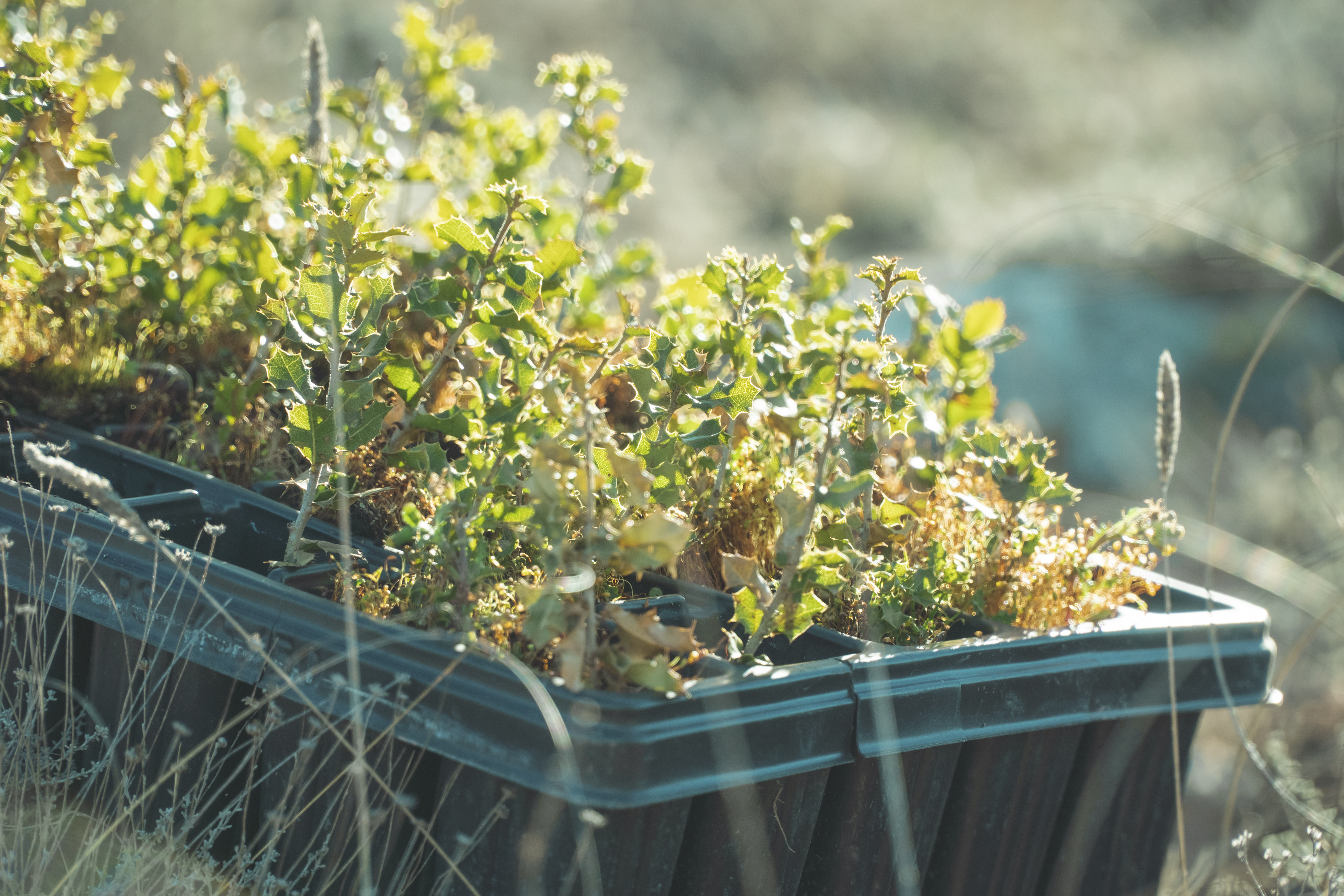Top 10 most planted trees of 2022
At Life Terra, we are committed to selecting and planting the right tree in the right place. We are proud to say that in the last year, together with partners and volunteers, we achieved remarkable progress toward our goals of land restoration and reforestation.
We organised events in Europe with more than 30,000 participants actively engaged in planting initiatives. A diverse range of almost 300 tree species was chosen to help enhance the ecosystem resilience, fight drought, beautify landscapes and many other benefits.
1. Strawberry Tree - Arbutus unedo
Life Terra’s most planted tree is the Arbutus unedo, commonly referred to as the Strawberry Tree, is an evergreen shrub or small tree. Despite its name, the fruits of the Strawberry Tree are not actual strawberries but have a distinctive flavour reminiscent of a blend between a strawberry and a fig. The tree has been associated with myths and legends in various regions and its name "unedo" is said to come from the Latin phrase "unum edo," which means "I eat one." This refers to the experience of trying the fruit and realising that one is enough, as they have a unique taste!
This bell-shaped bush adds charm with its year-round presence and changes its look in different seasons with its green leaves, red fruits and its white flower blossoms certainly wins the title of the most peculiar and fashionable one!
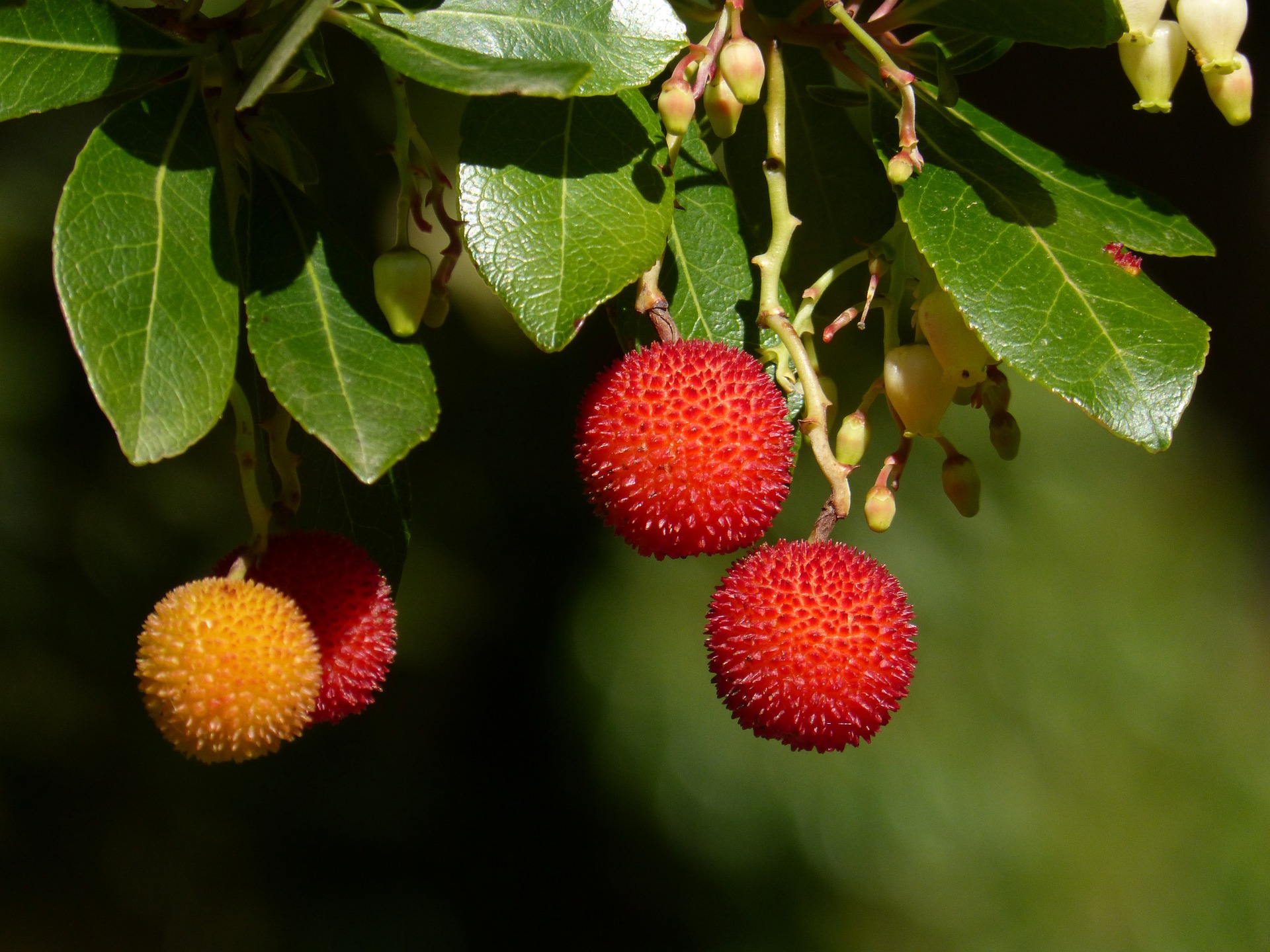
2. Mediterranean Cypress - Cupressus sempervirens
The Mediterranean Cypress, Cupressus sempervirens, is a delightful evergreen tree that gives off charm and grace. With its tall and slender figure, it adds a touch of elegance to any landscape and, with its dense, dark green foliage creates a beautiful contrast against the sky.
This tree is a survivor, in natural habitat 200-500 year old plants are very common. One of the oldest living cypresses is located in Italy and is dated as more than 800 years old!
It's important to note that the Mediterranean cypress has faced challenges due to the historical exploitation of its natural forests, resulting in a significant decline. However, despite this reality, the tree has found redemption in being widely cultivated throughout the Mediterranean and other regions for ornamental and religious purposes. It has become a cherished symbol, particularly in cemeteries, where it represents everlasting remembrance and serves as a testament to its enduring allure.
Planting it is so easy: just find a sunny spot with well-drained soil for it to thrive. Oh, and let's not forget the aromatic wood that emits a heavenly fragrance. It's like nature's own air freshener! So, if you're looking to add elegance and a delightful scent to your surroundings, the Mediterranean cypress is your go-to tree.
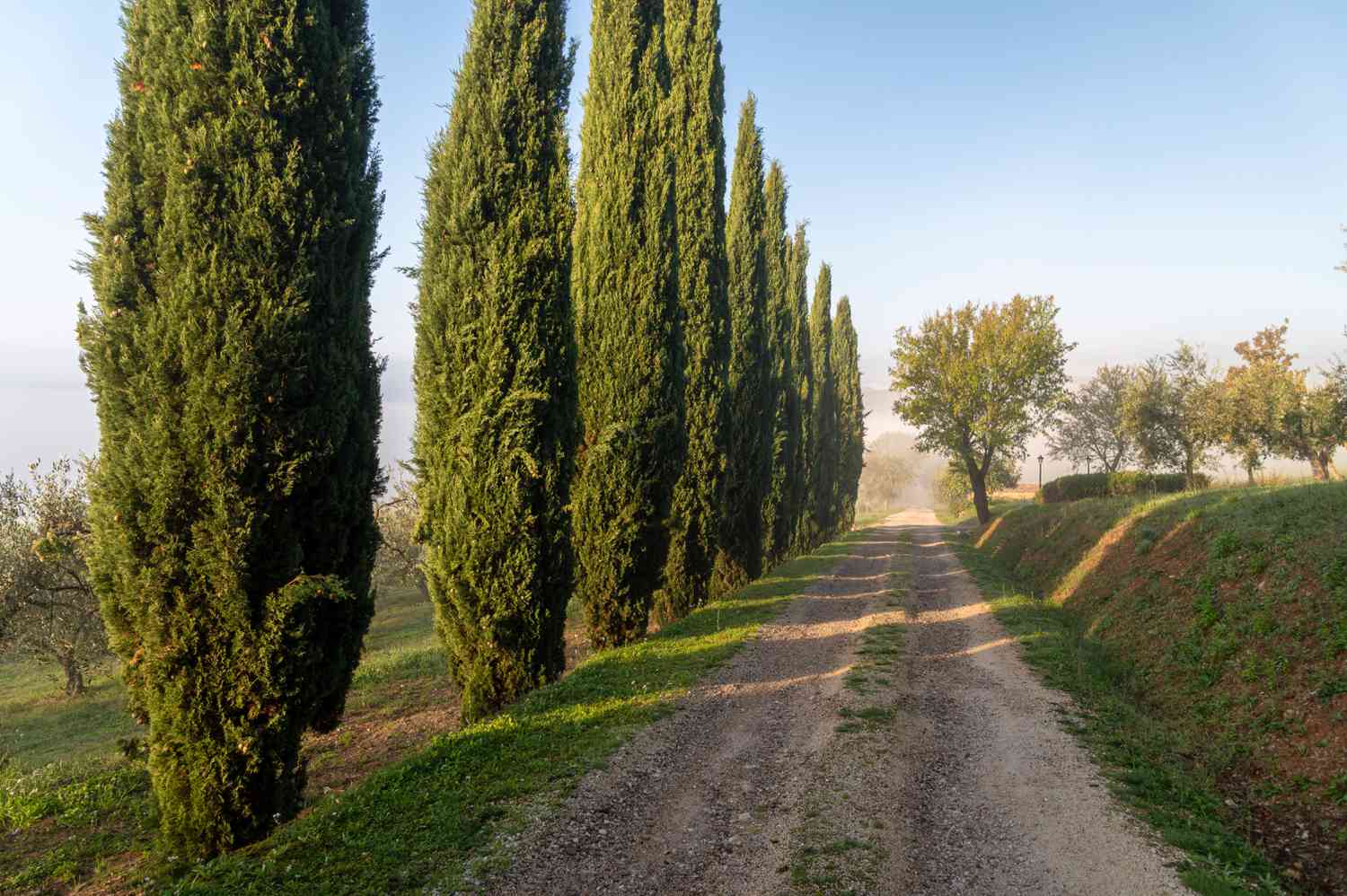
3. Spanish Juniper - Juniperus thurifera
If you are wondering what a Spanish Mediterranean landscape would look like without this tree you should imagine a desert, because the Spanish Juniper is the most common in this region!
Nevertheless, Spain is not the only country to have the privilege of having this aromatic tree. Indeed, the Juniper can be found in dry-soiled and sunny locations as well as in southern France, Corsica, Morocco, and North Algeria. It is a useful and very durable tree. Its berries and sap have been used in medicine in Chinese and Native American cultures. It requires no maintenance since they can remove their branches to survive the harshest climates. And finally one of its most interesting aspects is being drought-tolerant! The only enemies seem to be the overgrazing and the African goats that eat its leaves!
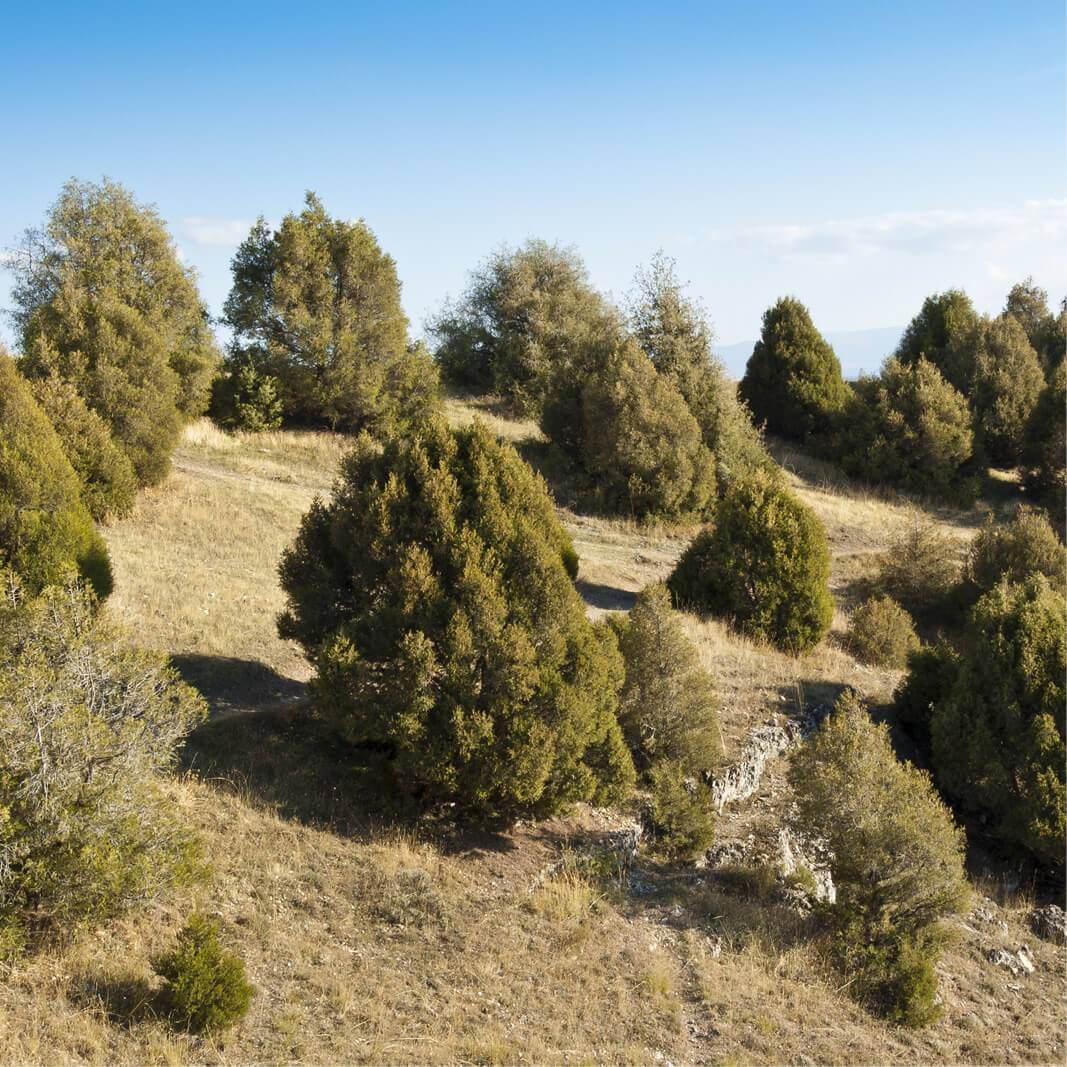
4. Turkey Oak - Quercus cerris
The Turkey Oak can be imagined as a talented athlete trained to shine in every aspect! It is a fast-growing tree that can reach up to 40m tall, it has a trunk up to 1.5-2m diameter and it holds the ground with a well-developed root system. But it does not end here, it also has incredible longevity, it can live up to 120-150 years! The iconic leaves turn yellow to gold in late autumn and fall or persist in the crown until the next spring, especially on young trees. It is particularly present in the Balkan and Italian Peninsulas. It is not a picky type of tree so it doesn’t mind growing from sea level up to the Apennines. In Italy, it covers around 280,000 hectares over the peninsula, frequently occurring together with Hungarian oak.
Even though all the positive features, the Turkey Oak has just one flaw, the wood has relatively few uses due to its tendency to crack and its lower quality. However, it has a useful role in soil conservation, erosion control and reforestation of bare soils because of its ability to establish and grow quickly in a wide range of soil. So, in the end, we think it’s a champion of its league!
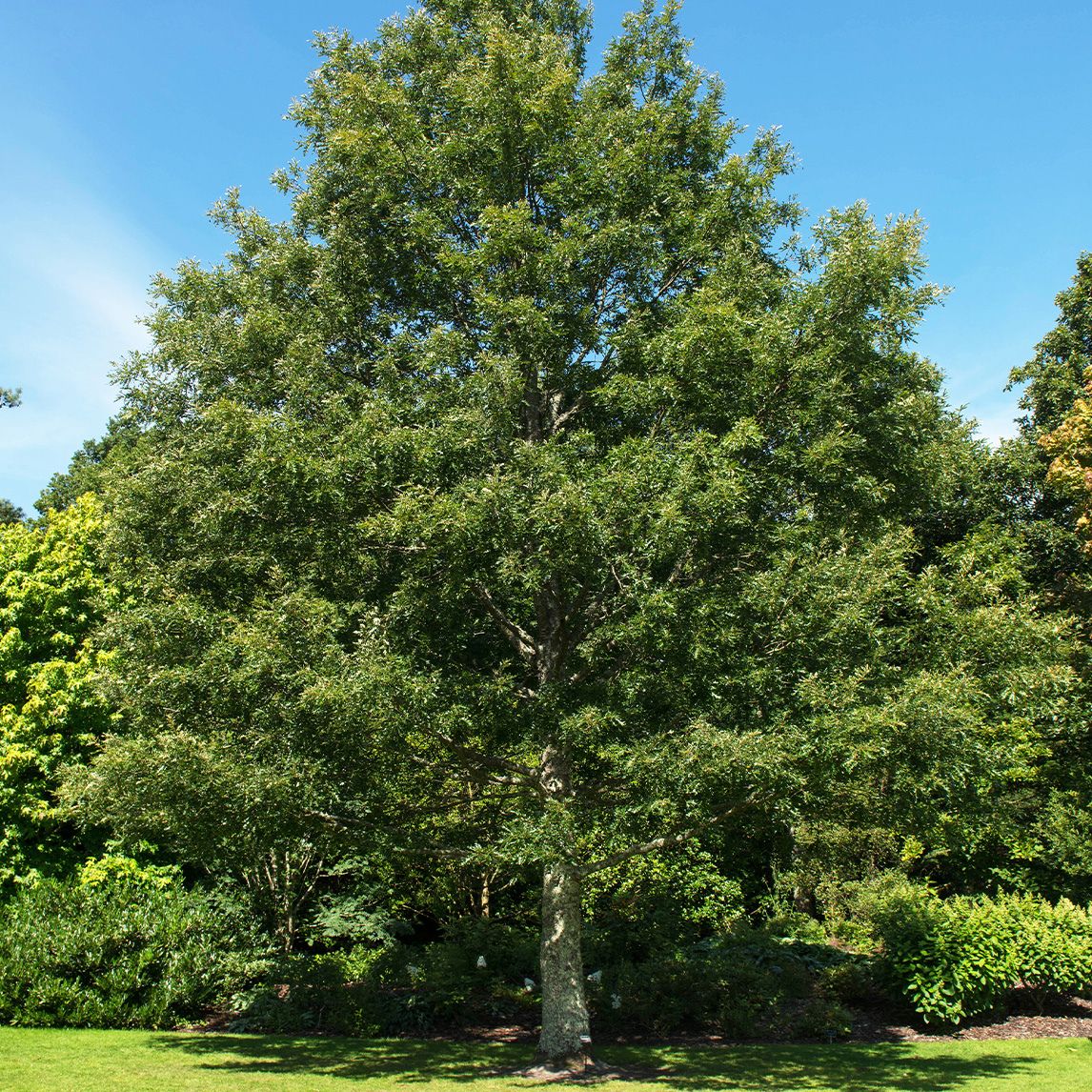
5. European Silver Fir - Abies alba
Meet the Silver Fir, the long-living and giant tree (up to 60m) found in Europe! From the east to the west and south, the Silver Fir grows naturally in mountainous regions and wins the title of the most ecologic one! The tree is indispensable for maintaining high biodiversity in forested areas. Its deep taproots offering stability, alongside its easily biodegradable needle litter, are the key to establishing and managing silvicultural systems.
Although the species is cold-hardy and remains a sensitive subject, it does not tolerate late frost in spring and is vulnerable to fire, fungus, insects and pollution!
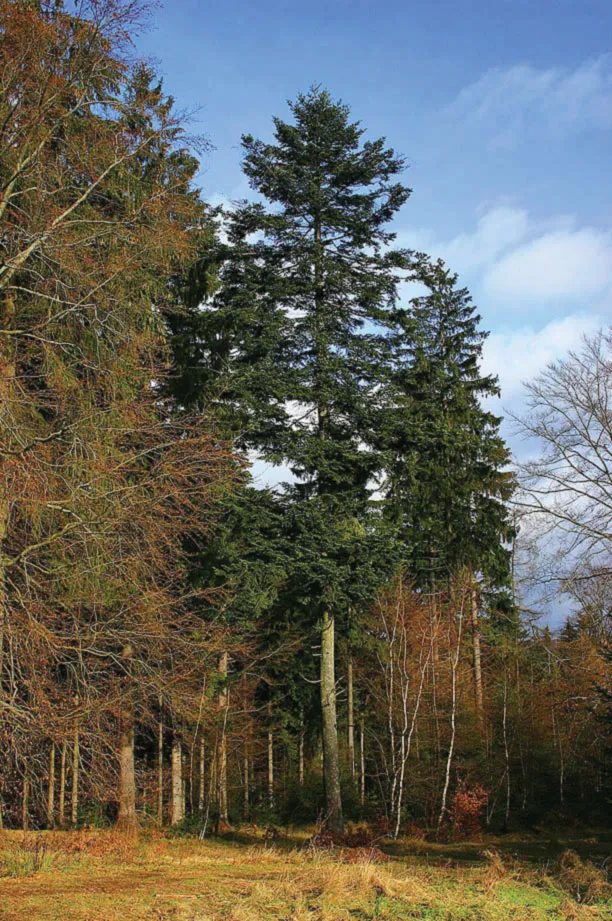
6. Holm Oak - Quercus ilex
Let's dive into the awesome world of Holm Oaks! These trees are like the celebrities of the Spanish Mediterranean landscape. They can grow anywhere, but they crave moist soil and lots of sunshine. Here's the scoop: Holm Oak acorns are like gourmet treats for animals. Pigs go crazy for them, and that's what gives Iberian cold meat that extra special flavour. But it's not just pigs who are obsessed! Partridges, rabbits, ducks, and wood pigeons also think these acorns are the bomb. They're like a feast for everyone!
But wait, there's more! Holm Oak acorns are so versatile. You can even use them to make flour or bread. Talk about a tree that does it all! These oaks are not just pretty, they're tasty and handy too. In Spain, it's really important to protect Holm Oaks because they create a whole ecosystem with other amazing animals like the Iberian lynx and the imperial eagle. They're like the popular kids who attract all the incredible creatures!
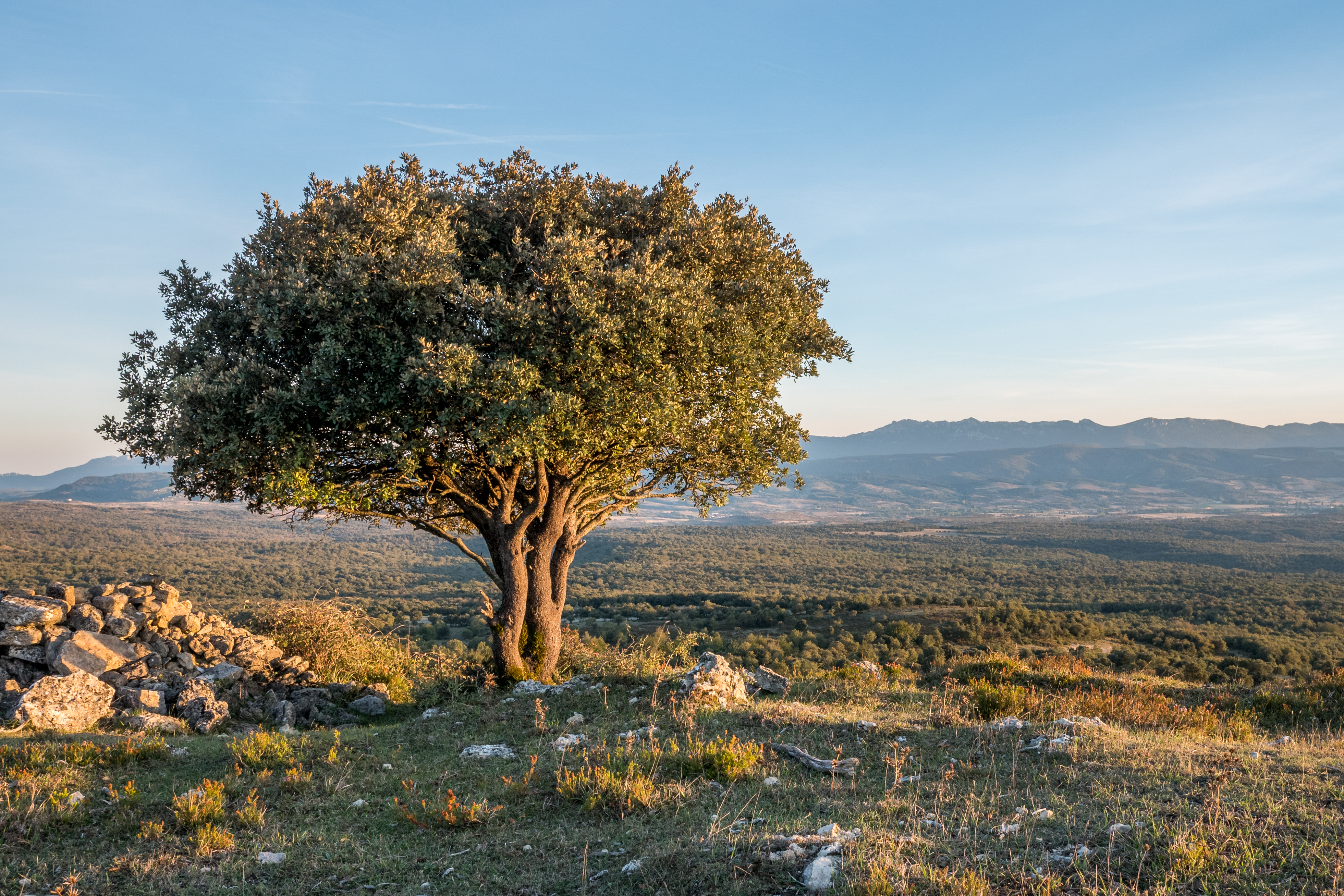
7. Mastic Tree - Pistacia lentiscus
Alright, let's talk about the groovy Mastic tree! It is the rockstar of the Mediterranean, a bushy shrub or a small tree that stays green all year round. If you get yourself a Pistacia lentiscus in spring, get ready for a colourful extravagance in your own backyard!
This tree's got some serious game when it comes to its resin. People have been obsessed with it for ages! It's been used to make chewing gum, cosmetics, and even in traditional medicine. Another multitasking tree! Oh, and did we mention that mastic is also a flavour sensation? It adds that extra texture to Mediterranean cuisine.
So, if you're into that vibe and you want a tree that's gonna make your garden pop, look no further. Get ready to impress your senses!
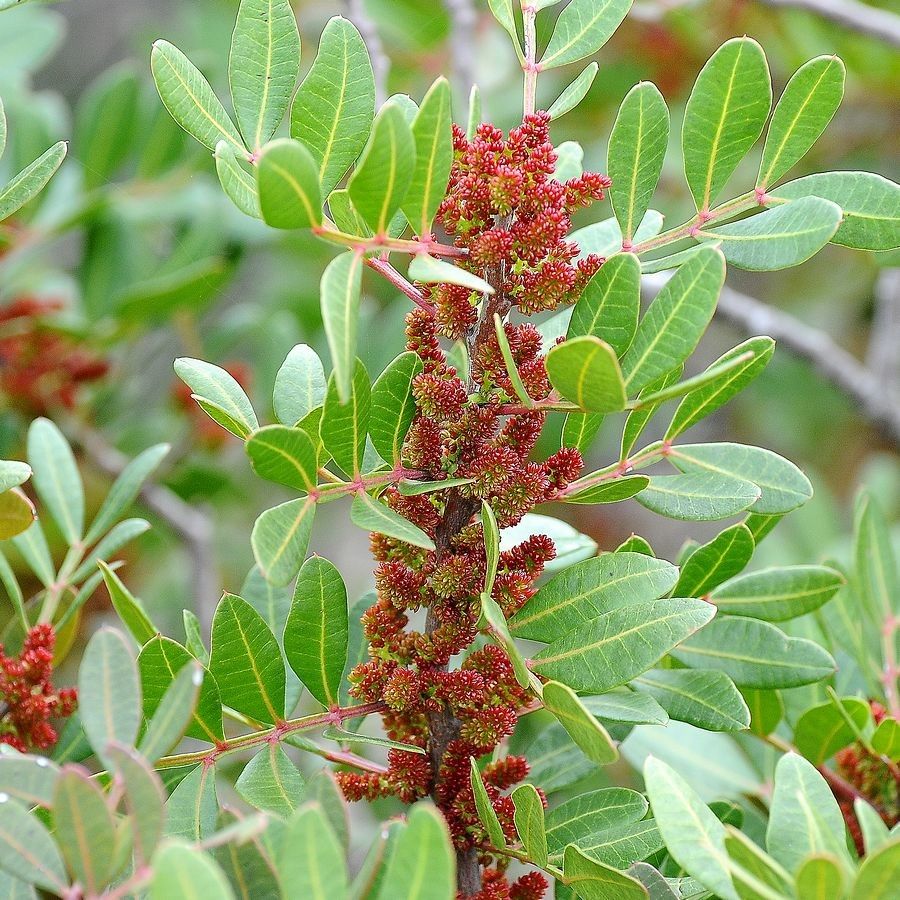
8. Pedunculate Oak - Quercus robur
Quercus robur, commonly called the English oak or Pedunculate oak, it's one of the most sturdy and iconic deciduous trees!
Did you know that the English oak is not only admired for its beauty but also plays a vital role in supporting wildlife? Its branches become cosy homes for various critters, from birds to squirrels and everything in between. When it comes to tradition, the English oak has quite a reputation. It holds a special place in folklore and culture, embodying endurance and a deep-rooted connection to history. But here's where it gets cooler: remember Robin Hood? Well, legend has it that he chilled under the enormous branches of an ancient oak tree. The ultimate hideout spot!
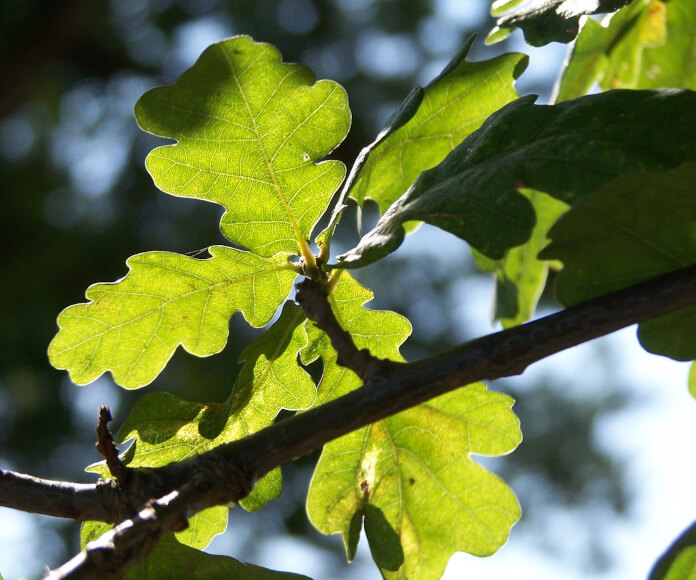
9. European Larch - Larix decidua
The European Larch thrives in the alpine environments of central and eastern Europe. What makes this tree stand out? Unlike most conifers, it's a deciduous tree. When autumn arrives, it puts on a show, transforming its vibrant green needles into a stunning display of yellow.
Its wood is incredibly versatile, it's the go-to material for constructing traditional wooden mountain houses, robust flooring, and durable outdoor furniture. Have you ever heard of the 'Alphorn'? If you've been fortunate enough to explore the beautiful Alps, you might have come across this extraordinary instrument. Crafted from Larch wood, the Alphorn is a majestic 3-4 meter horn with a distinct curved end. It was used as a means of communication between villages in neighbouring valleys. It's like the original phone call, Alpine style! The European Larch truly embraces the spirit of the mountains.
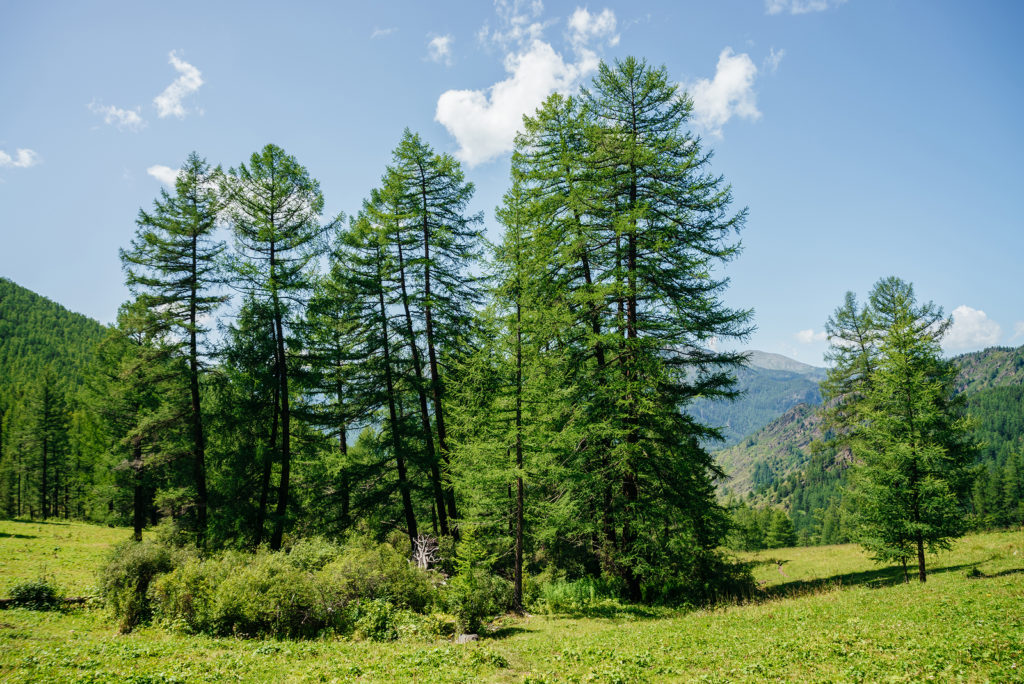
10. Common Hawthorn - Crataegus monogyna
Alright, we reached the last position but even this will be full of surprises! The Common Hawthorn adapts like a chameleon, which is why you can spot it all across Europe and even in Northern Africa. It's a shape-shifter, sometimes bushy and compact, other times a low tree. When spring arrives, the Common Hawthorn steals the spotlight with its breathtaking white flowers. People can't resist its beauty, often cultivating it for ornamental purposes. And guess who else falls under its spell? Pollinators! Bees and friends flock to its nectar and pollen, turning it into a buzzing Mediterranean paradise.
In many cultures, it is associated with protection against evil spirits and bad luck. Its beautiful blossoms and vibrant berries serve as a delightful reminder of its rich cultural significance. Be careful though, despite their good looks the red berries are only edible for animals!
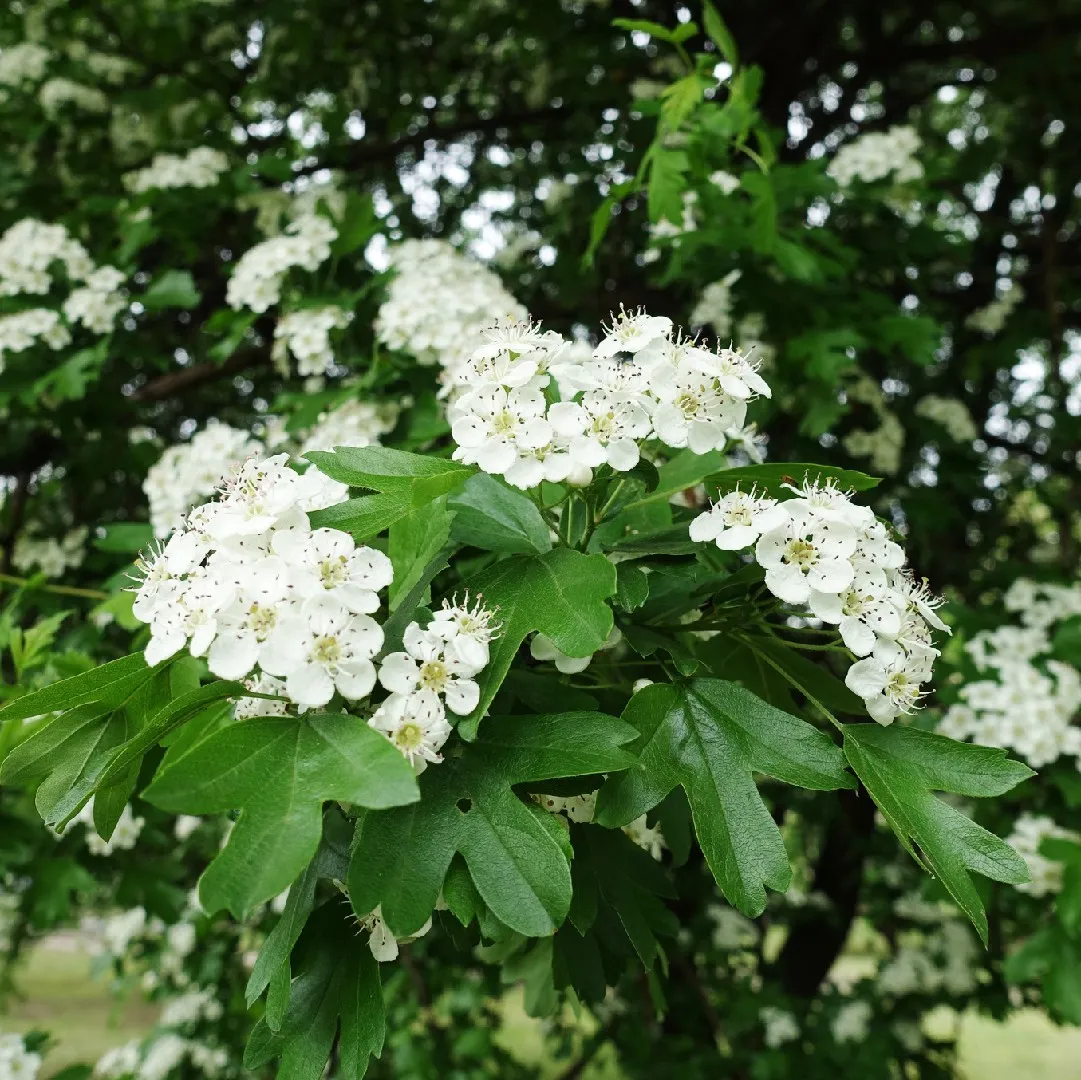
The end! These were Life Terra’s 10 most planted trees this past season. We sincerely hope that each one has intrigued you and taught you something. Now it's just a matter of getting out and meeting them!
